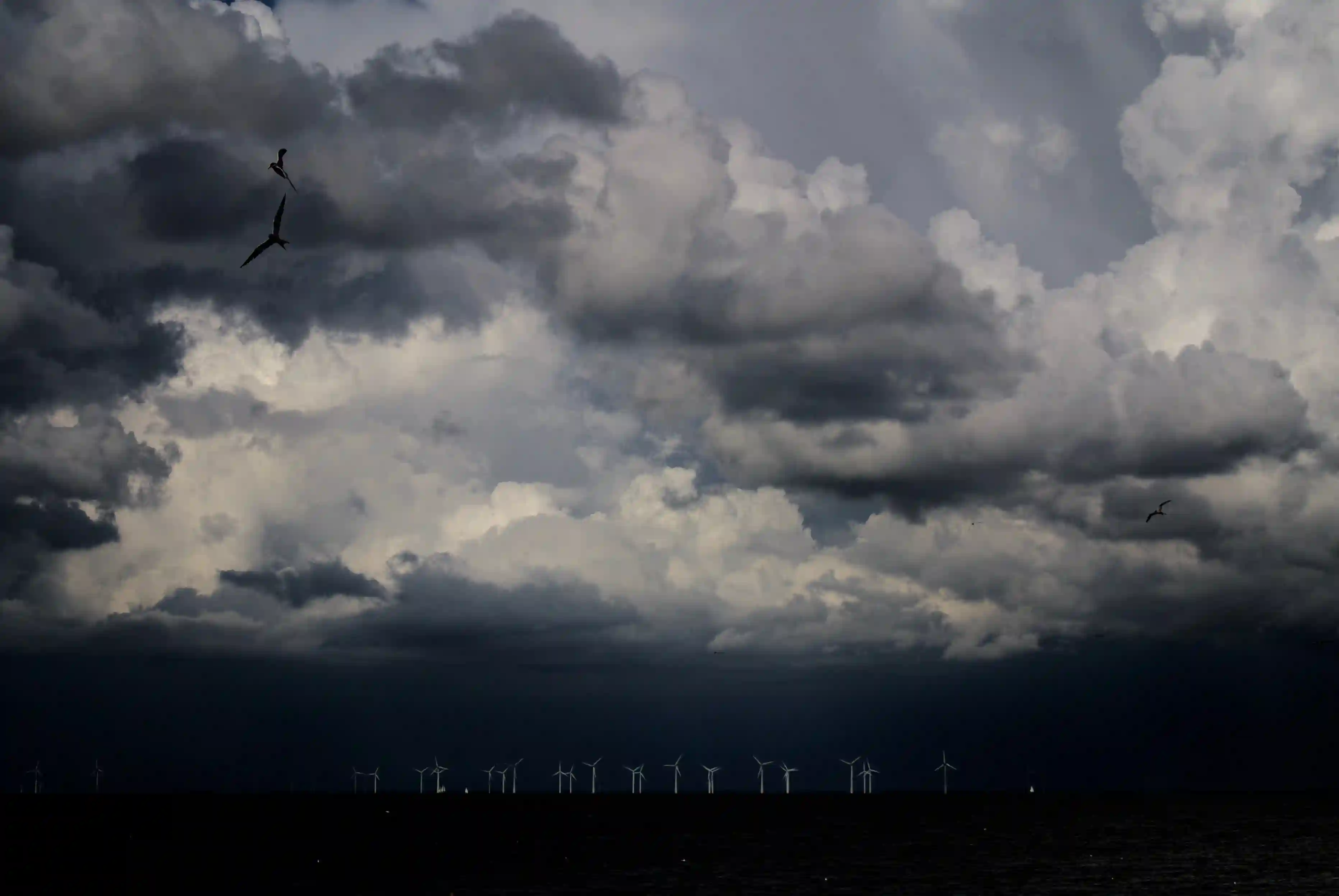I Offshore Wind and This and That I The Beginning of an Endless Relationship Between the Offshore Wind Industry and ICT

I Offshore Wind and This and That I The Beginning of an Endless Relationship Between the Offshore Wind Industry and ICT

The Offshore Wind Industry (OWI) has never been more exciting! According to the February 2023 edition of the Global Offshore Wind Report by the World Forum Offshore Wind (WFO), the expected installation in GW by 2035 may reach an astonishing near-50 GW in capacity and with the matrix mainly taken up from the APAC and European markets. In comparison to the figure for 2023 at near-20 GW, I think it may be safe to state that the OWI is shaping up to be a beautiful industry to be part of. Opportunities are literally endless and as deep as the ocean… (bloody deep!)
Just in case, now you know… In the 1970s, the oil crisis led to a search for alternative energy sources. Researchers and engineers began to consider ways to optimize existing wind energy systems. They hoped to expand the technology's capacity, particularly in areas with limited land for onshore wind turbines. Offshore wind energy was an obvious solution, as winds tend to be more powerful at sea than on land. In 1991, the world's first offshore wind farm was launched off the coast of Vindeby in Denmark which had the capacity to power around 2,200 homes at the time.
Fast-forward in time to 2023. OWI can be considered an exciting and meaningful investment. However, challenges continue to keep industry professionals, experts and policymakers on their toes! I would like to categories them into "Tangible" and "Intangible" challenges. Tangible-Challenges would be something like engineering related agenda such as turbine designs, logistics, manufacturing / fabrication, infrastructure etc.; and Intangible-Challenges would be something like policy, investment, business module, talent cultivation etc.
So how does ICT have to do with any of it? Okay, let me start off with what is ICT? So, Bard (Google) says that "Information and communications technology (ICT) is the use of information technology (IT) to create, manage, and deliver information. ICT includes a wide range of technologies, such as computers, telecommunications, and networking". Quite spot on! With the right set of imagination, thorough understanding of the challenges and knowledge of technologies, ICT may provide powerful solutions. For example, how can we digitize our education, how can we improve the efficiency of resources used or how can we improve industrial applications or processes?
Under the light of Offshore Wind. Knowing that the OWI can sometimes be closed-looped, a little likethe automotive industry, and with every right reasons such as safety. We can perhaps consider to separate ICT solutions into Invasive or Non-Invasive. A little lost? No problem. What I meant by Invasive is agenda that requires actions that embeds additional items such as sensors to acquire or intercept existing data for extended applications. For example, adding additional sensors in turbines to intercept data for power-optimization analysis; Non-Invasive would be applications that can operate with much independently or parallel to core-system, to provide value-adding solutions. For example, providing a drone-fleet for perimeter security.
I highly recommend OWI and ICT to commence on more non-invasive agenda immediately.
It is no hidden secret that certain Economies in APAC is well known for their excellence in technology, ICT and semiconductor industries, such as Taiwan, Japan, China and Korea. It is also old news that the ICT industry of Taiwan provides some of the leading industrial applications. Why? Well, Taiwan has over four decades of in-depth expertise of OEM/ODM experiences, and with forward thinking investments into cross-domain applications such as smart manufacturing, logistics, smart city applications or traditional-practice upgrades and so much more. It is a no-brainer for OWI to take full advantage of this. Sounds interesting? Let us chat a bit more then.
Okay, but let us be realistic too. Not everything is value-adding, and definitely some challenges holds higher value than others. Although deep down inside my heart I know everyone in the renewable industry is doing it out of the purity to save planet earth, but we also need to ensure that resources are placed with maximum impact. So, having said that, let us revisit some industry news within the one calendar year and see if we can identify some high-value challenges.
This being my first blog post via EnergyOMNI, I will share assorted challenges for now and we can be more themed-based in future blog posts. After browsing, searching and discussions with related industry experts, there are three which I think we can have a look to kickoff.
A. Dead bodies were found hanging on offshore wind turbines:
Through local press media we understand that apparently somebody navigated an ultra low-tech vessel(s), and docked with offshore wind turbines to administer their activities. The bodies were found much later, and the bodies decayed badly making it difficult for authorities to identify who they were.
When I discussed this scenario with ICT experts they where astonished to realized that this had happened, and offshore wind assets such as turbines does not already have real-time close circuit security system with AI that looks out to cover the wind farm. Lense and camera technology has developed maturely with 4K or even up to 8K images, and now with AI, it is possible to setup a reasonable parameter security that can monitor, detect, identify, alert and maybe even provide initial action in real-time before full security protocol takes place. On this occasion it was dead bodies hanging on the turbines, what if next time it is something more devastating? Or, what if there was a need for emergency rescue? ICT will be able to provide this value-adding and non-invasive solution.
B. Lack of talents:
As OWI is picking up traction and being a relatively new industry, it is evident that the OWI is lacking talents. It takes time, effort, and resources to cultivate talents, and unfortunately time is a luxury that OWI does not seem to have. Despite the efforts from government to encourage tertiary education to create related courses, it is still unable to keep up with industry demand.
Complete training is essential and talents are certainly one of the most valuable assets any establishments may have. However, currently traditional process of training is unable to match industry demand due to time and resources available. Technologies such as AR/VR/XR have been matured and evolved into professional applications such as training, education and even healthcare services. Legacy automotive companies have already commenced to utilize this technology for their training and also vehicle maintenance for more efficient and precision. Recently metaverse technologies integrated with related hardware has also been utilized to provide simulations and training. These technologies not only can accelerate talent training, but can also provide remote tech-support for onsite technicians.
C. Accidents or injuries onsite:
With limited healthcare resources, medical staff available onsite and the lead-time to transport patients, this creates pressure points of risks and may lead to worsening of the situation.
As OWI is a multinational metropolitan industry, often experts from across the world collaborate on one project. This may at times be a challenge at best, and most dangerous when an accident or injury has occurred. During the peak of COVID-19, cities such as the New Taipei City had adopted remote healthcare services using technologies such as webcams, VR headsets to accompany with an extensive healthcare platform to trace, dispatch, monitor or execute necessary medical actions with much reduced lead-time to maximize the golden-window.
Of course, the above-mentioned ICT solutions are on the assumption that there is a fast, low latency and wide bandwidth communication network such as the 5G network or O-RAN. Luckily, some Telecommunications Service Providers (TSP) or government agencies are willing to invest to unlock innovative and unlimited possibilities.
I hope this blog post is of interest and may provide you with some ingredients for you to cook up a new delicious new cuisine! Please stay tuned for more posts like this!


David Chiang
A specialist in international public affairs and strategic marketing, with a decade of experience in non-profit organizations. Chiang has a talent for creating effective platforms that connect governments, industries, investors, and the general public to stimulate business opportunities. Currently, Chiang serves as the Representative of the German Offshore-Wind Initiative (GOI) and the World Forum Offshore Wind (WFO) in Taiwan. In this role, he is dedicated to facilitating the development of the Offshore Wind Industry. Chiang holds a Baccalaureus Technologiae Degree in Hospitality Management from the Cape Peninsula University of Technology in South Africa, where he developed his skills in creativity, logic, and forming clear strategies.
More related articles
